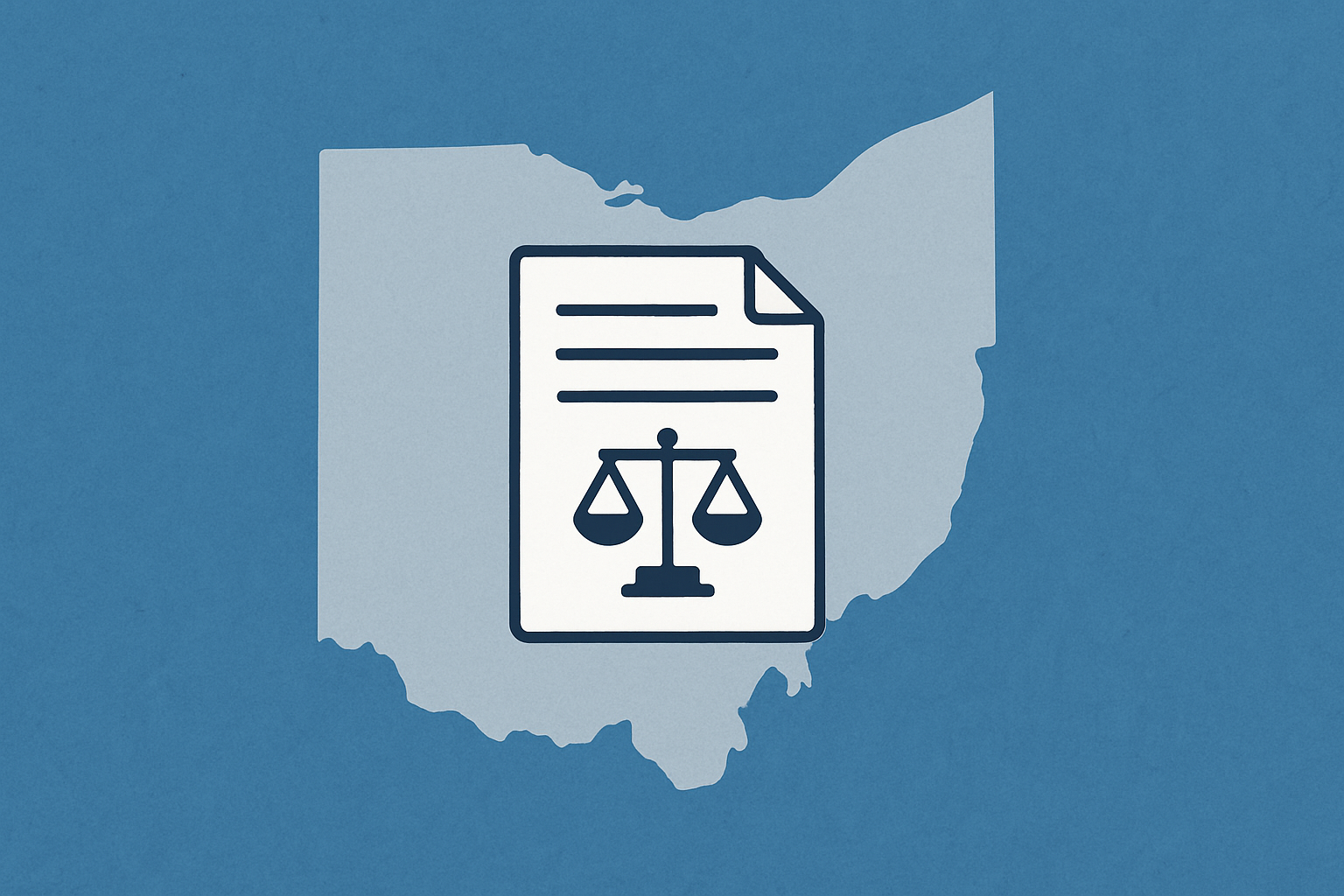Ohio Bill of Sale Form
An Ohio Bill of Sale Form is a legal contract that documents a property transfer between two parties. It formally records an ownership transfer between a buyer and a seller in the state of Ohio.
Ohio Bill of Sale Types
As-Is
Vehicle
Why Do You Need an Ohio Bill of Sale Form?
In Ohio, you do not necessarily need a Bill of Sale for most sales involving personal property. Regardless, it is a smart choice to have an official and legally binding contract.
Motor vehicle sales would generally require a Bill of Sale. The buyer would use it for the title transfer and registration with the Ohio Bureau of Motor Vehicles (BMV).
The Bill of Sale has sections for key details like:
- Item identification number (such as VIN)
- The make, model, and year
- Odometer reading (for vehicles under 10 years old)
- Finalized sale price
According to the law in Ohio, transactions involving high-value goods of $500 or more should always have a written contract. This legal agreement is what makes the sale enforceable. In Ohio, a standard Bill of Sale doesn’t require notarization, but vehicle titles must be notarized to be legally valid.
Common Uses of an Ohio Bill of Sale Form
The Ohio Bill of Sale Form is useful for a variety of reasons:
- Conflict Resolution: Serves as a reference to settle any later disagreements by detailing the exact terms of sale.
- Regulatory Compliance: Meets all applicable state and federal standards and legal filing requirements.
- Transaction Records: Creates a formal paper trail for registrations. Useful for insurance purposes and future resale.
- Ownership Evidence: Provides clear proof that the item’s title has moved to the new owner.
- Transfer of Liabilities: Records the complete transfer of any outstanding obligations.

FAQs
Is a Bill of Sale required for all sales in Ohio?
No, it is not a legal requirement for personal property transactions in Ohio. However, it is advised for high-value sales. Buyers need it for ownership transfers of motor vehicles.
It is used to transfer the title and register the vehicle with the Ohio BMV. Under Ohio law, sales of goods worth $500 or more must have a written agreement to be legally enforceable.
What specific details are needed for an Ohio vehicle Bill of Sale?
An Ohio Bill of Sale for a motor vehicle should contain the name and address of both the buyer and the seller. The date of the sale, along with a detailed description of the vehicle that includes the make, model, year, and VIN.
It should also have the mileage on the odometer and the purchase price. The form must specify whether the sale is a “as is” sale. It must contain all necessary signatures of both parties to obtain the sale’s legal validity and clarity.
Does the form need to be notarized?
Ohio does not require notarization for a Bill of Sale to be valid. However, it can act as a double authenticator and legal security.
It is very useful in transactions that involve high-value items or conflict resolutions regarding the sale. However, Vehicle title transfers in Ohio often need a notary for validity. The title’s notarization is crucial for the BMV process.
Where do I submit an Ohio Bill of Sale for a vehicle?
For vehicle sales in Ohio, the buyer submits the Ohio Bill of Sale. This goes with the signed title and notarized title, where applicable to their local county clerk of courts' title office.
It is used to process the official title transfer and vehicle registration. The seller should always retain a copy for their own records and may submit a "Notice of Sale" to the BMV.